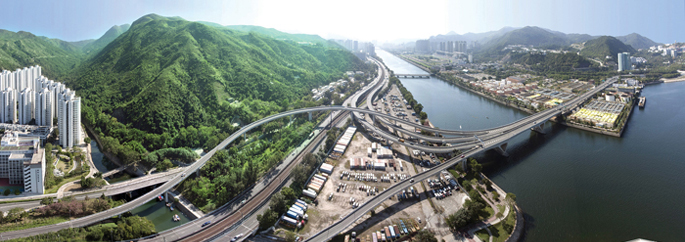Taking the opportunity to introduce our Sustainability Report 2013-14, I am pleased to share our latest sustainability initiatives and plans with our stakeholders.
Amid the challenges posed by climate change and mounting local demands, we centre our vision on providing world-class wastewater and stormwater drainage services, enabling the sustainable development of Hong Kong. In the past year, we continued to deliver quality services for the public with focus on upgrading drainage and sewerage facilities, driving technological innovations, integrating sustainable designs, as well as engaging our stakeholders.
The year 2013 witnessed a high annual rainfall in Hong Kong, nearly about 20 per cent above the mean from 1981 to 2010. To guard public safety and maintain normal operation of the city during extreme weather, we review and upgrade stormwater drainage systems every year to ensure adequate and effective flood protection. By completing the recommendations put forward in Drainage Master Plans and regional studies, we eliminated two flooding blackspots in early 2014. The improvement works for the remaining 11 blackspots are either commissioned, being carried out or under planning and design.
With its comprehensive network, the public sewerage system in Hong Kong collects and treats about 2.8 million cubic metres sewage every day, serving about 93 per cent of the population. To improve the water quality of Victoria Harbour, the Government has been implementing the megascale Harbour Area Treatment Scheme (HATS) for nearly two decades. We have made steady progress for HATS Stage 2A in the past year, including the upgrading of Stonecutters Island Sewage Treatment Works and eight existing preliminary treatment works along the harbour front, as well as the construction of a deep tunnel sewage conveyance system. Upon HATS Stage 2A’s anticipated commissioning in 2015, the water quality of Victoria Harbour will be further improved. Meanwhile, the Kowloon Bay Sewage Interception Station has been put into operation since June 2013 and helps prevent the polluted flow with odour in Jordan Valley Box Culvert from entering Kai Tak Approach Channel.
In putting our values and missions into practice, we spare no effort in research and development of new technologies to facilitate continual improvements in our services. During 2013-14, we were honoured to receive public recognition for a number of engineering innovations, such as the environmental sludge treatment process developed on cosettling technology, the specially designed tunnel boring machine used in Lai Chi Kok Drainage Tunnel (LCKDT), the automatic movable crest weirs developed under Happy Valley Underground Stormwater Storage Scheme (HVUSSS), and the smart devices to uplift safety for personnel working in confined space. Through various award schemes, seminars, site visits and technical papers, we have been sharing with the industry and interested parties our achievements and experience.
Throughout the lifecycle of our facilities for flood alleviation and sewage treatment, we strive to promote environmental conservation and sustainability by embracing the concept of “Blue-Green Infrastructure”, by which “Blue” refers to water bodies while “Green” represents landscaping and greening. The 0.8 hectare engineered wetland for supporting the flourishing ecosystem under drainage improvement works in Shuen Wan, as well as the pet garden built atop the stilling basin of LCKDT, are the cases in point. Furthermore, we have initiated a joint research with the academia to study overseas experience in revitalising urban streams and formulate guidelines for future project’s reference.
As an integral part of our service planning and development, stakeholder engagement activities are held to raise public awareness on DSD’s work and disseminate information regarding our services. For projects with significant social impacts like HATS Stage 2A and Relocation of Sha Tin Sewage Treatment Works (STW) to Caverns, we have proactively arranged large-scale engagement activities in collaboration with our working partners to gather views from the project participants and the community. In particular for the public engagement exercise of Relocation of Sha Tin STW to Caverns, we have intensified the public’s understanding of sewage treatment works in caverns and the project details by way of the innovative and effective “Experiential, Multi-platform and Iconic” approach.
Last but not least, we put safety as top priority for our staff, consultants and contractors. The accreditation of our occupational health and safety management system under international standards is a clear proof. We also encourage new works contracts and maintenance term contracts to participate in various safety competitions so as to benchmark their safety performance.
Looking forward, we will continue to enhance our facilities, optimise our internal operations and explore new solutions with a view to improving our services to the public. Your views are important to our continual improvement. You are most welcome to complete and return the feedback form in the full version of this Report.
Director of Drainage Services
Daniel CHUNG Kum-wah












